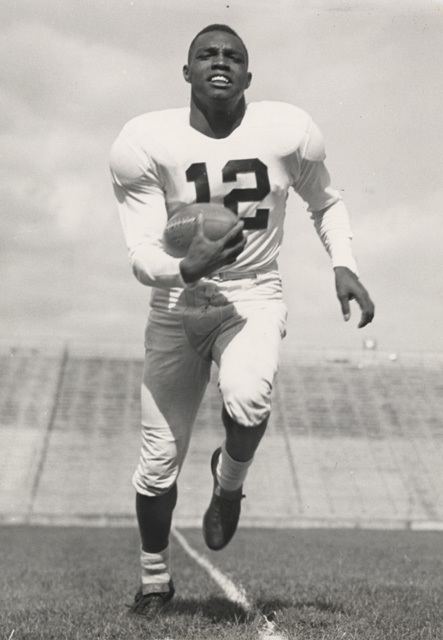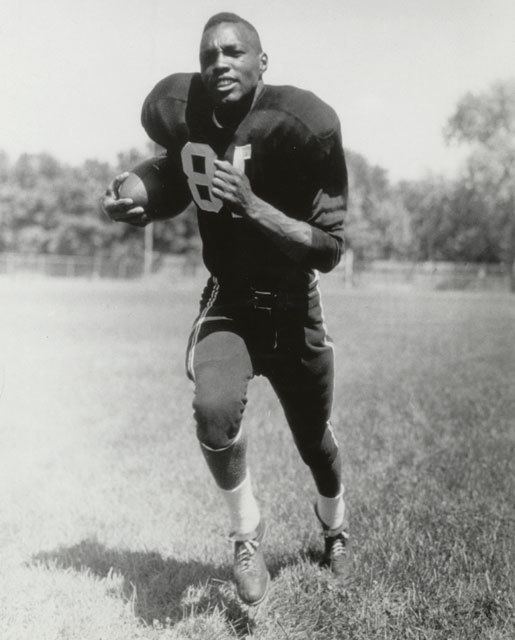Name Wallace Triplett | 1952-1953 Chicago Cardinals Positions Running back | |
 | ||
Date of birth (1926-04-18) April 18, 1926 (age 89) NFL draft 1949 / Round: 19 / Pick 182 Education Pennsylvania State University | ||
Wallace Triplett (born April 18, 1926) is a former professional American football player, the first African-American to be drafted by and play for a National Football League team. For that reason, his portrait hangs in the Pro Football Hall of Fame in Canton, Ohio.
Contents

Early life

Triplett, the son of a postal worker, was born and raised in the Philadelphia suburb of La Mott, Pennsylvania, part of Cheltenham Township. His reputation as a talented high school football player, combined with his upscale address, prompted the University of Miami to offer him a scholarship sight unseen, under the assumption Triplett was white. The then-segregated university rescinded the scholarship when they discovered Triplett was black. Triplett instead earned a Senatorial Scholarship for his academics and chose to attend Penn State University in the fall of 1945.
Penn State

Along with Dennie Hoggard, Triplett was one of the first African-Americans to take the field in a varsity football game for Penn State. During the 1946 season, Penn State's Nittany Lions team voted to cancel a regular-season game at the University of Miami, rather than compromise by not bringing their black players. (Miami, like other southern schools at the time, refused to compete against integrated schools unless they left their black players at home.)

In 1948, Triplett became the first African-American to play in the Cotton Bowl Classic, catching the tying touchdown in Penn State's 13-13 tie with Southern Methodist University. It has been suggested Penn State's now-famous "We Are Penn State!" stadium cheer has its origins in SMU's request for a meeting to protest the participation of Penn State's two black players (Triplett and Hoggard). Team captain Steve Suhey was said to have responded, "We are Penn State. There will be no meetings."

Triplett also co-founded the Gamma Nu chapter of Alpha Phi Alpha while at Penn State. Triplett returned to Penn State on November 11, 2015 to meet with Coach James Franklin and the team after their bye-week scrimmage.
NFL
Although Triplett was only the third African-American chosen in the 1949 NFL Draft, he was the first of the draftees to take the field in a league game. (Other undrafted African-Americans had previously played in the league.) The 5'-10", 173-pound running back and return specialist played for the Detroit Lions from 1949–50.
Triplett holds the Lions' single-game record in kickoff return yardage with 294 (second-highest total in NFL history), including a 97-yard touchdown return against the Los Angeles Rams in 1950; his average of 73.5 yards per return in that game is also an NFL record. He also set the Lions' record for the longest run from scrimmage with an 80-yard touchdown against the Green Bay Packers.
Following the 1950 season, Triplett became the first NFL player drafted into military service for the Korean War. When he returned from active duty, the Lions traded him to the Chicago Cardinals. He retired from professional football in 1953. After his playing days, Triplett worked as a teacher, in the insurance business, and in management for the Chrysler Corporation.
